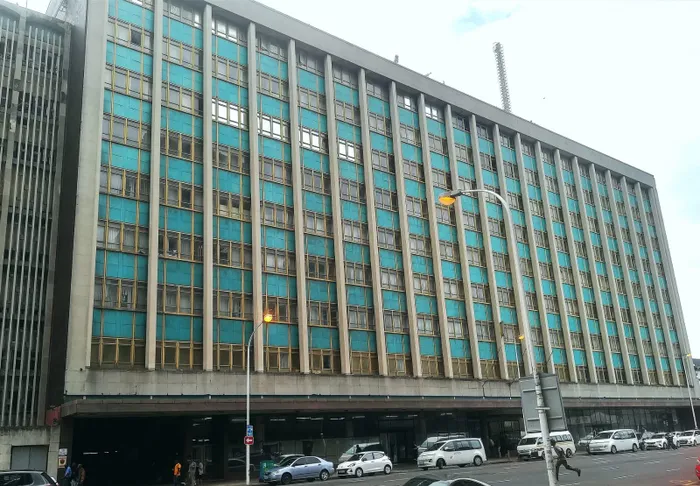Durban boarding house gets it Wright
Then & Now

Annandale House in Smith Street in 1906.
Image: Supplied
The Annandale Private Boarding House at 194 Smith Street was a well-known fixture in Durban for over 50 years.
Originally a private home, it was converted into a small boarding house in about 1900. After the conclusion of the Anglo-Boer War in 1902, it was taken over by Mrs H Wright who was born and educated in Scotland. She named it Annandale after the district of Dumfriesshire in Scotland centred on the dale of the Annan river.

Transnet Building in Anton Lembede Street today.
Image: Mark Levin
Mrs Wright had travelled extensively in the United States before settling in Natal in the late 1890s. She saw the need for a boarding house in that part of Durban, enlarging Annandale House until it could accommodate up to 60 boarders by 1907. There were two dining rooms, a sitting room and a ladies’ drawing room. Mrs Wright prided the personal attention she paid to every detail of her establishment. She certainly held her own against similar establishments and hotels, as did subsequent owners.
Annandale survived until the 1950s when it and the neighbouring Waldorf Hotel were bought and demolished by the SA Railways and South African Airways for their Durban Headquarters.
Designed by Geoffrey Le Sueur, their new office block was named the Oswald Pirow Building. Pirow (1890–1959) had been a Cabinet Minister under Prime Minister Hertzog between 1929 and 1939, holding the portfolios of Justice, Defence and Railways and Harbours. It was in his capacity as Minister of Railways and Harbours that the government purchased Union Airways in 1934 and renamed it South African Airways.
Pirow's naked ambition and political opportunism saw him nail his colours to Nazism and anti-Semitism which destroyed his career and his reputation. Today, the office block is known as the Transnet building.
- In out Then & Now column last week which looked at the Wesleyan Methodist Church and Parsonage in Russell Street, we wrote that the Church was taken over by Bishop Merchandising owned by Krish Govender. Bishop Merchandising was founded by Mr Bishop with Govender managing the business.